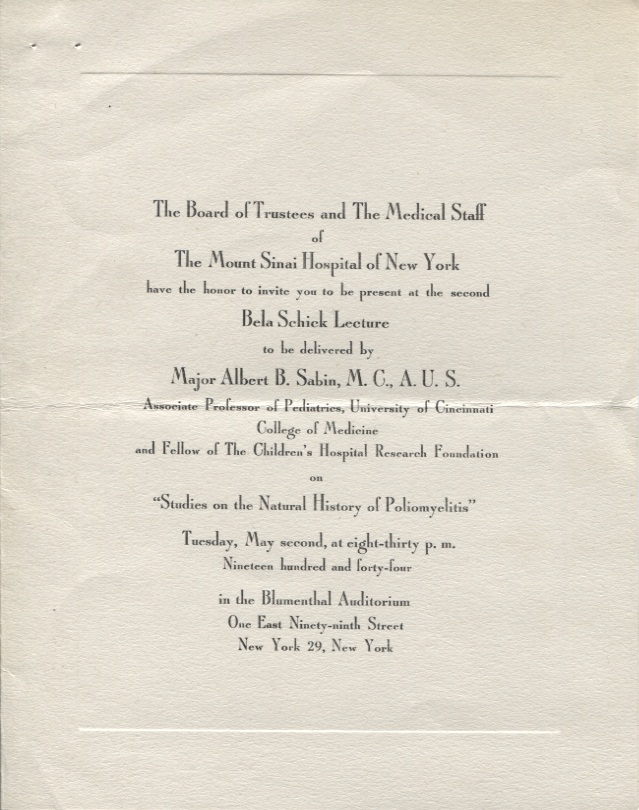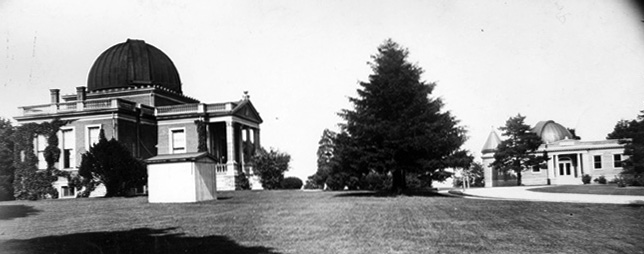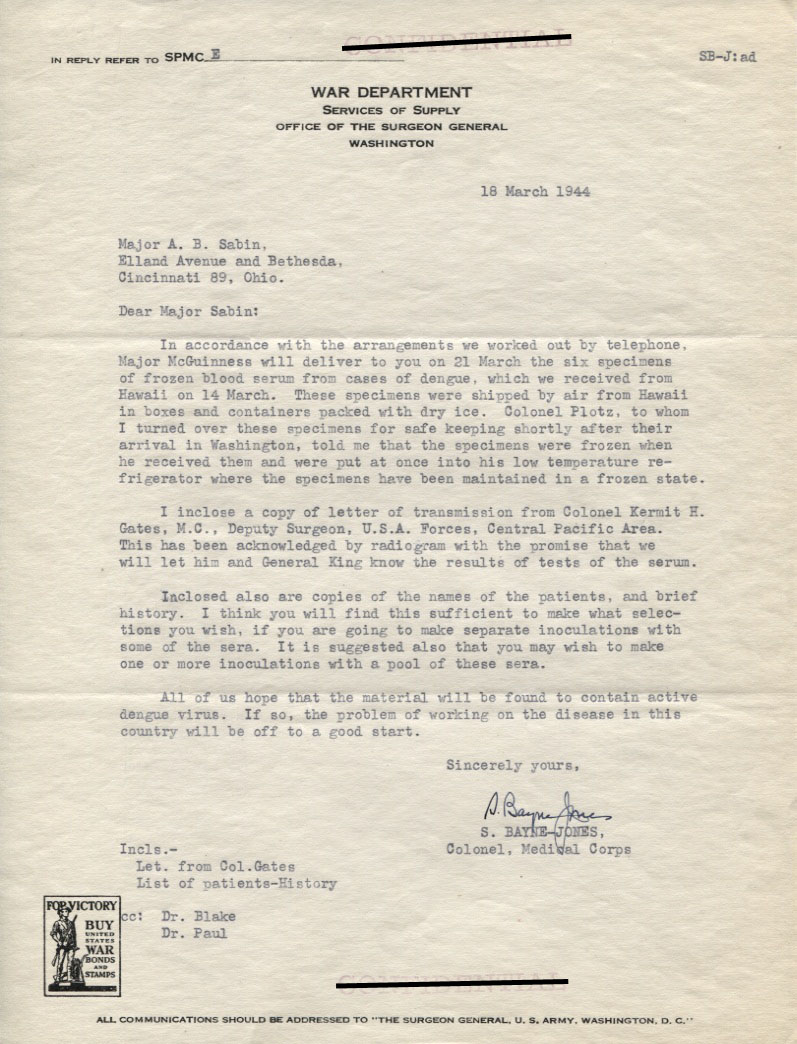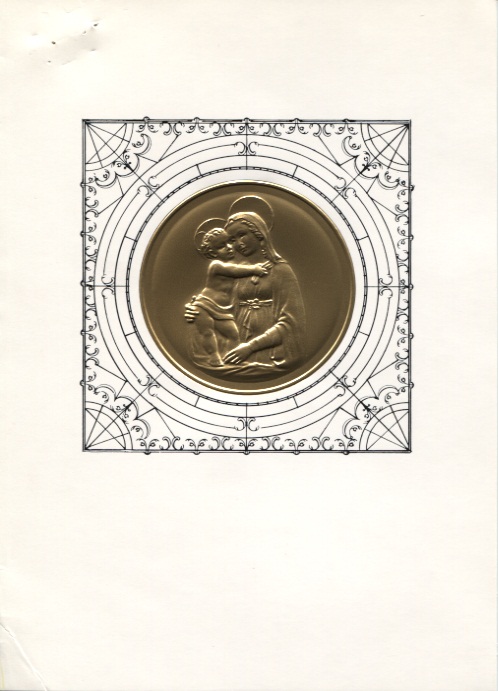
Invitation to Dr. Sabin's Bela Schick Lecture, 1944. This can be found in Series 3 – Manuscripts, Box 6, Folder 2 – Correspondence, photos, draft, 1944.
On Tuesday, January 3rd, I read a tweet from the Bill and Melinda Gates Foundation which said:
“On this day in 1938 @marchofdimes was founded by #FDR to combat #polio!”
In honor of the anniversary of the founding of the March of Dimes, here are a couple more things in the Sabin collection that highlight some of Dr. Sabin’s research he conducted with aid from the National Foundation for Infantile Paralysis (NFIP). (You may recall from an earlier blog post that the NFIP later changed its name to the March of Dimes.)
In May 1944, Dr. Sabin gave the Bela Schick lecture called, “Studies on the Natural History of Poliomyelitis” at Mount Sinai Hospital in New York. (For your information, Dr. Bela Schick was the developer of the Schick immunity test, which helped to determine if someone was susceptible to diphtheria. In 1923, he became director of the Department of Pediatrics at Mount Sinai Hospital.*) This lectureship was established by Dr. Schick’s friends and colleagues after his retirement, and Dr. Sabin was invited to give the 2nd annual lecture. Dr. Sabin was contacted by Dr. Murray Bass to give a report on “virus studies, especially in connection with poliomyelitis.”[1] Of course, Dr. Sabin accepted, after he made sure that he would be in the country at the time. When contacted about a dinner prior to the lecture, he suggested that NFIP notables Mr. Basil O’Connor (President) and Dr. Don W. Gudakunst (Medical Director) be invited as well.[2] Continue reading





